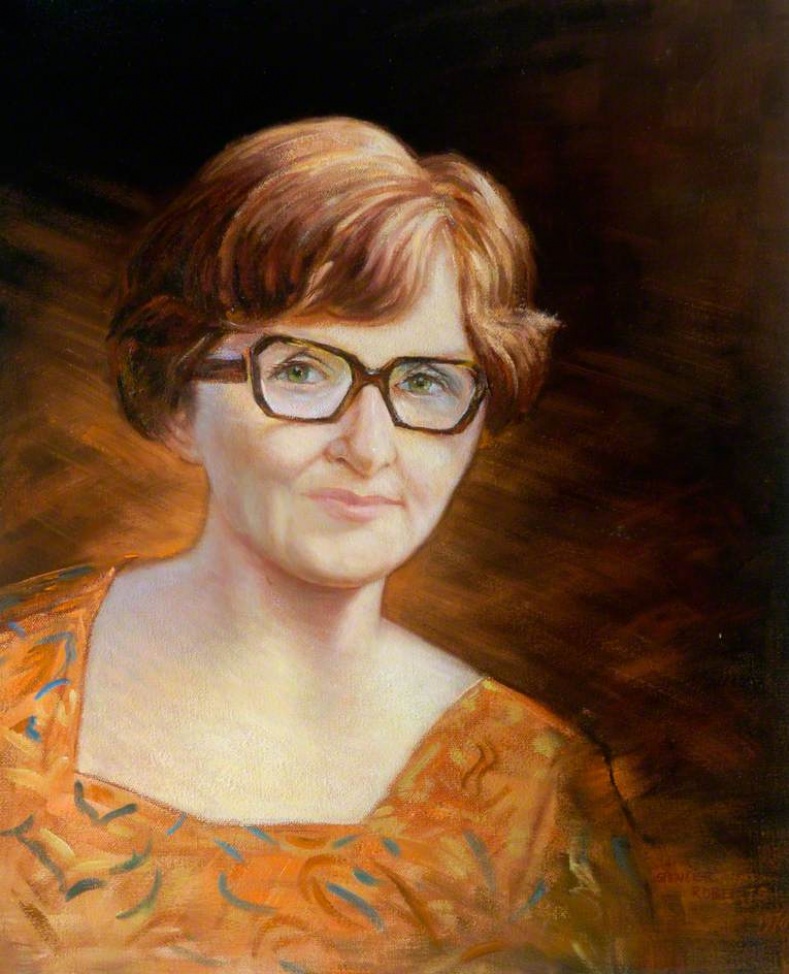
Cookson, Dame Catherine
1906-1998
Novelist
Dame Catherine Cookson (née McMullen) was a best-selling North East novelist. Dame Catherine came from humble origins, the daughter of unmarried domestic servant Catherine Fawcett (1883–1956). She was raised in Jarrow by her grandmother and step-grandfather in a strongly Irish Catholic family environment. Catherine was educated at St Peter and St Paul's Roman Catholic School, Jarrow, but left school aged 12 to work in domestic service before becoming a laundry girl two years later at the workhouse in South Shields.
Her classic ‘rags to riches’ story is well known. She left Jarrow in 1929 to run the laundry at the workhouse in Hastings. She saved hard, bought a large house that she shared with her grandmother, and took in lodgers. One of these was Thomas Henry Cookson (1912–1998), a mathematics teacher at Hastings grammar school, whom she married in 1940. Thomas was middle class, intellectually curious and hardworking. The couple were well suited, Catherine sharing with her husband a fascination for the dramas of everyday life and the historical forces that shaped them. It is in giving expression to her thoughts and feelings that she became a writer.
Her career began after suffering a series of miscarriages, understood later to be due to the rare vascular condition telangiectasia. A long period of depression resulted, relieved in part by her joining the Hastings writers’ group. She became famous following the publication by Macmillan in 1950 of her first novel, Kate Hannigan, the tale of a spirited slum dweller who wins the heart of a married doctor. She went on to publish a long string of novels, including The Glass Virgin, The Black Velvet Gown, Katie Mulholland, and the Mallen trilogy. She published nearly 100 books, mostly set in Tyneside, sold 123 million copies, and had her novels adapted for radio, television and film.
In later life, following her husband’s retirement, Catherine returned with Tom to live in the North East, at first in Jesmond, Newcastle, then in Corbridge, followed by Langley, and finally returning to Jesmond. As her wealth amassed, she became increasingly philanthropic. Newcastle University was a major beneficiary. Her first donation of £250,000 was made in the early 1980s to fund research on haematology. She pledged a further £800,000 in 1985, again for research on blood disorders. She gave a further £20,000 to the Hatton Gallery and £32,000 to the Robinson Library.
In 1985 Catherine was awarded an OBE, and in 1993 a DBE, becoming a dame of the British Empire. She died on the 11th of June 1998 and her husband Tom died just seventeen days later. Their joint estate was left to the Catherine Cookson Charitable Trust, established in 1977, which, with investments worth £32 million in 2017, typically makes grants of £1 million a year. Most beneficiaries are North East charities working in the fields of education, medical research, children and young people, religion, arts and culture. It is fitting that the fruit of her work continues to support the communities she so lovingly observed and wrote about in her novels.
References
Jones, K. (2004). Cookson [née Davies], Dame Catherine Ann (1906–1998), writer, Oxford Dictionary of National Biography, Available here (Accessed: 28/03/2018).
The Catherine Cookson Charitable Trust. (2018). About the Trust, Available here (Accessed: 28/03/2018).
Wikipedia. (2018). Catherine Cookson, Available here (Accessed: 28/03/2018).